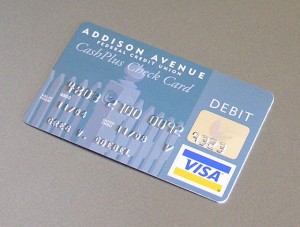
Many people view paying for purchases with a debit card as safer than paying with a credit card. After all, when you pay with a debit card, you are paying from your bank account with your money and you are not incurring debt or paying interest on that charges. However, many people forget that debit cards have their own hidden dangers that could end up costing the user a great deal of money. Here are some of the things that you should be aware of when using your debit card.
Overdraft Charges
One of the biggest dangers of using a debit card to make purchases is causing an overdraft on your account and incurring overdraft fees for each purchase. If you accidently use your debit card to charge more than you have available in your account, you may be charged up to $35 for each transaction made. Multiple small purchases hitting your account at the same time could result in multiple overdraft charges totaling more than $100. If you use your debit card for purchases frequently, it is best to keep track of your account balance using a banking app or budgeting app like Mint so you will know exactly how much money is in the account in real time.
Less Protection For Purchases
When you notice fraudulent charges on a credit card statement, the situation can typically be resolved with a quick phone call to the credit card company and you are generally not liable for the charges. The situation can be very different when using a debit card for purchases. Many debit card holders are surprised to find that there is no guarantee that the money will ever be returned to their account.
Liability for fraudulent purchases is capped at $50 for the debit card holder if the fraud is reported within two days of the transaction, according to federal law. If the transaction is reported between three and sixty days, you could be held liable for up to $500 in charges. After sixty days, you may not get any of your money back at all regardless of how much was drained from the account.
The banks have a window of time, typically ten business days, to investigate the fraud allegations and determine whether they are legitimate, after which they must return the funds to the account. This means that it could take this long to have any of the funds stolen placed back into the account to be used for rent payments, bills, groceries, or any other need you have. This can cause a great strain on a family that is living paycheck to paycheck. To protect yourself, make sure that you have an emergency fund available that contains enough money to cover at least two months’ worth of expenses that you can use to bridge the gap until your money is returned.
